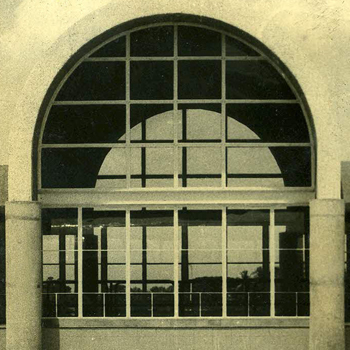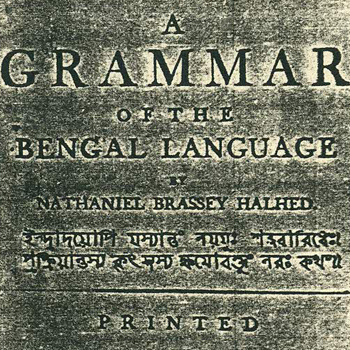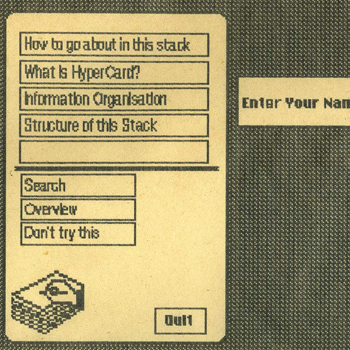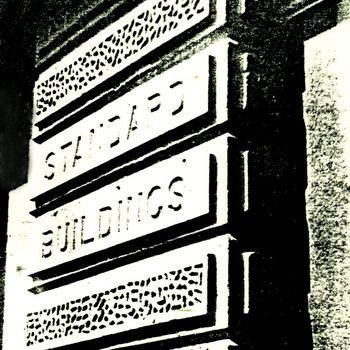Communication Design
Batch 1987-1989
(8 items)
Communication DesignBatch 1987-1989
(8 items)
(8 items)
by Ajay D kulkarni
There exists a complex built environment around us that has evolved out of the various needs. We constantly participate in their environment, with other living and nonliving things. In the process of this interaction, we respond to them in a respectful manner. Depending upon the needs, we come in contact with the built environment, which is mainly composed of buildings (here, plantation as a deliberate action can also be a built environment). Obviously, we express them verbally as well (depending upon their uses). as a temple," 'a house," 'a shop," etc. These verbal expressions are merely based on our past experiences, and thus, these interpretations are nothing but identification of the building types that stand for that specific use.
Visual attributes basically help in the identification. We have strong notions of this environment around us. Such an identification is an inevitable process. Basically, we have the visual image in our mind rather than the verbal interpretations. The human mind is aided by the existence of structure in the world. The fact that it is almost always possible to guess the category name even when a very small position of the object (or organism) is seen suggests that for most objects. Perpetual and functional features occur in some unique bundles. In other words, objects within a category appear to substantially share features that show a clear correlation.
New examples appear to have been positioned with respect to the center, based on the degree of similarity in their features.
People appear to have perceptions about the office buildings or its 'officeness." It is important that the building or product form shows its belongingness to the category in order that it would be potentially recognized as its legitimate member, and not by default but through conscious and systematic efforts, it becomes necessary to have belongingness, which evokes respective emotions of the building environment. This enhances the quality of the environment. In the process of design, we not only give strategies for the mere reproduction of existing products or buildings, but always new interpretations, which are quite often based on typicality.
by Dipti Vaidya
TYPOGRAPHY
Typography can be described as designing for the efficient communication of words that A wishes to transmit to B. This would entail the production of new typefaces and the use of existing typefaces in an ordered arrangement whereby efficient communication may take place. In order to understand language, the typeographer needs linguistic skills regarding its structure and the various uses of language that determine meaning, as used by A and B.
BILINGUISM
Bilinguism means words that underscore the linguistic contact between two languages. Bilingualism mixes two cultures together and binds them in stronger ties for a better understanding. The same thought or idea is shared by two different audiences side by side simultaneously, which gives a feeling of oneness. Bilingualism is the means of a healthy exchange. It can prove to be an important tool to unite a country and countries for a better world.
Bilingualism affects not only the smallest units of language sounds, but also the characters of the type used to print letters.
The two languages of a bilingual text can remain in perpetual confusion and conflict. The risk of typographical conflict will be all the greater if the languages share the same writing system. Each identical sound signals, accented letter, word picture, and letter group has a different role in each language. The same letter shapes appear differently in different languages,
Thus, in designing a bilingual page, the problem of language must be a prime consideration. Looking at bilinguism from a cost point of view, the consumption of a bilinguistic page is lower because of the smaller amount of paper required and the lower circulation of the copies.
by J Vijayakumar
Computers are going to play a very important role in the field of education. It is sure to create a revolution in all facets of education. This project tries to add a new dimension to computer-aided instruction (CAI) by emphasizing motivational methods since the computer is viewed as a self-instructing tool. Various new possibilities for CAI and different questioning methods have also been discussed.
In this report, the initial state of CAI is briefly mentioned. The second chapter talks about other possibilities for computers in education. The third chapter deals in detail with the various strategies for motivation in the processes of comprehension and evaluation. The last chapter is a model package worked out using the new strategies.
(The scope of this observation is restricted to the CA at the school level in India.) The central school of IIT is one of the nodal centers for computer education introduced by the government. It is supposed to have the best computer facilities and instructional packages. The packages that were under use or available there were studied. The general format of the packages is similar. It opens with pages of running text, followed by questions to answer. Colors are used to highlight the important words in the text. A few packages had figures accompanying the text. Animation has also been tried out in the evaluation part.
by Manisha P Lele
The study of primitives in Indian scripts is not the study of the historical evolution of the letter forms nor of their primitive symbology but the study of the elements constituting the physical shape of the letter form, i.e., the curves, lines, and circle segments, and the manner in which they join so beautifully.
This project is a step towards generating 'a' system of the different Indian scripts rather than setting them as individual scripts. In the process of also tracing out similarities in a single script, the research will also broaden my understanding of the scripts under study with respect to their form and their joinery norms. forms with lines and curves. The sophistication of today's software allows the ability to change the size, angle, and placement of the skeleton's lines and curves, simplifying the evolution of the skeleton's lines and curves.
by Deepak G Patil
If a person goes to any large architectural complex in Bombay, he feels lost and directionless. He could not locate his destination with ease. Why ? What helped a person to locate the destination, person, or place for which he was looking? How was the information conveyed to a person in such a huge building? The signboards and information boards that give information and direction are the source that guides a person to reach his destination.
The project is done as stacks on the hypercard, which shows various models in which the information can be retrieved. The information can be static (as in the book) or dynamic (on video), user-dependent or interactive (in games), This report itself is a stack on HyperCard, which also has access to these models.
by Poornima Khadakkar
If a person goes to any large architectural complex in Bombay, he feels lost and directionless. He could not locate his destination with ease. Why ? What helped a person to locate the destination, person, or place for which he was looking? How was the information conveyed to a person in such a huge building? The signboards and information boards that give information and direction are the source that guides a person to reach his destination.
by S. N. Vikas
Quite often we hear people complaining about reading, such as "they can't read properly or they are tired of reading," etc., as the phenomenon appears to have been occurring quite often. It is possible that the problem may be with the reading material itself, in the form of composition, kind of printing, the fonts used, etc. Hence, it becomes necessary for us to analyze the problems and suggest an appropriate remedy. In this project, studies are done in Telugu. A systematic ergonomic study with respect to the identified problems is intended. Basically, the process of reading depends on the following factors:
VISIBILITY
The quality of a character or symbol that makes it separately visible from its surroundings
LEGIBILITY
The attribute of alphanumeric characters that makes it possible for each one to be identifiable from others (this depends on such features as stroke width, forms of the characters, contrast, and illumination).
READABILITY
This quality makes possible the recognition of the information content of material when represented by alphanumerical characters in meaningful groupings, such as words, sentences, or continuous text. depends more on the spacing of the characters and groups of characters on their combination into sentences or other forms than on the specific features of the individual characters.
Such studies regarding the English language are available. These studies have been implemented quite often in enhancing the quality of the reading environment. This has given rise to more than 1,000 types of faces according to their specific functions. This is primarily a psychological study in designing a better reading environment.
by Shilpa Raje
The theater experience is that of the perpetual present tense: it occurs, it happens. It is transitory in the fact that on stopping it stops being; unlike literature and the visual arts, which are tangible and unchanging, the essence of this is to catch something in a moment in time and freeze it; this is impossible with theater as it is a performing art, an event, and not an object.
With music, nothing persists except as it moves through time. A note cannot be held forever. Music is created by perpetual shifts of notes through repetition, variation, and the accumulation of effects. Similarly, theater occurs over time. A cumulative series of sights, sounds, and impressions creates theater.
Objects like costumes, props, scenery, and script are a part of theatre, but none constitute the art. Its permanent features are not theatrical. The script is an outline for the performance; unacted, the play remains incomplete. The experience will always be different as building occurs every time. Physical production affects the performance. The experience really lies in the performance itself.







